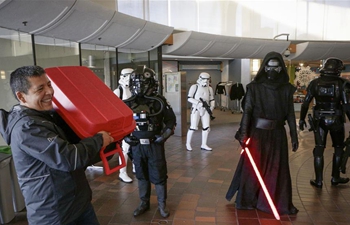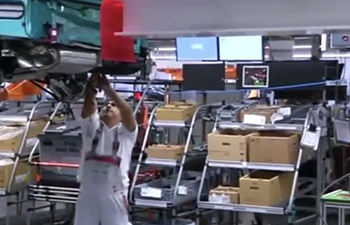LOMPOC, the United States, May 5 (Xinhua) -- The U.S. National Aeronautics and Space Administration (NASA) sent off InSight, its robotic lander, from the central coast of California at pre-dawn on Saturday to explore the deep interior of the red planet.
The lander blasted off at 4:05 a.m. local time (1105 GMT) atop a United Launch Alliance Atlas V rocket from the Vandenberg Air Force Base.
"Mars, here I come! 6 months and counting to the Red Planet," the mission team tweeted.
InSight, short for Interior Exploration using Seismic Investigations, Geodesy and Heat Transport, will study how rocky planets and their moons were formed.
"I am so excited! This is my first time watching a rocket launch on the West Coast," said Jennifer Ma, who drove here from San Diego on Friday to view the launch.
"Most of the hotel rooms in town sold out weeks ago. I had to stay in the car, waiting for the launch," she told Xinhua.
Missions to other planets are normally launched from NASA's Kennedy Space Center and fly east, over water. That's because the eastward direction adds the momentum of Earth's eastward rotation to the launch vehicle's own thrust.
But the Atlas V is powerful enough to fly south toward the sea from the Vandenberg Air Force Base. Besides, the air force base had greater availability to accommodate InSight's five-week launch window.













